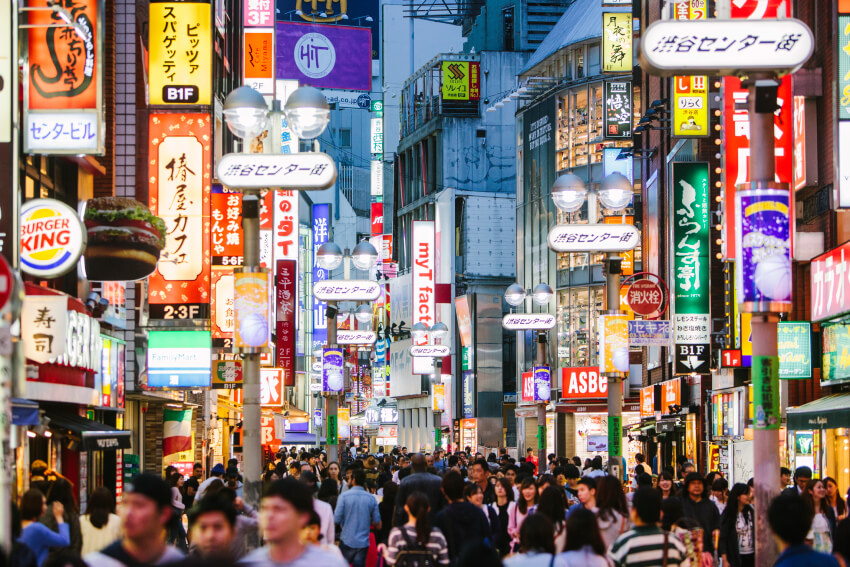Tokyo - colourful, vital & appealing
Japan is very attractive to real estate investors. While higher interest rates are putting pressure on the real estate markets in many other industrialised economies, the Bank of Japan sticks to its Quantitative and Qualitative Monetary Easing policy (QQE). The banks in Japan have been aggressive in their lending stance, and even this year, the situation is different from other markets such that some banks offering preferential interest rates below 0.30% on 35-year floating-rate mortgages for individuals. According to MSCI Real Estate Market Size Report, Japan is the second largest real estate market next to the United States and ahead of UK and China. In particular, the capital Tokyo continues to attract investors from all over the world, strengthening its pole position as the largest real estate market in the Asia-Pacific region. According to CBRE 2023 APAC Investor Intentions Survey Tokyo retained its position as the most preferred city for cross-border investment for a fourth consecutive year.

While the population has been declining in most regions of Japan for decades, it grew continuously in Tokyo. The population of Tokyo may be a bit hard to understand because of the way the figures are laid out. The 23 wards claim a population of 9.7 million (as of Jan 2023), but the metropolis has a population of about 14 million (January 2021). The greater Tokyo metropolitan area, which is spread over 3 surrounding prefectures, is much larger and has a population that is estimated to be over 36 million. Although the Corona pandemic briefly stopped this development due to the lack of migration from overseas and the other parts of Japan, Tokyo's attraction is unbroken – and since 2022, Tokyo's population has been growing again (+38,000 for Tokyo and +99,500 for greater Tokyo).

“In addition to the employment opportunities it provides, the megacity's allure endures due to its position as the nation's centre of politics, economics, and culture. While being a cutting-edge and stimulating metropolis, it also retains a history and culture that dates back to the Edo period, making it rich in diverse attractions, including a wide variety of arts and culture, convenient transportation, unique food culture and a city with various attractions," says Okamoto Masatomo, Head of Japan at AM ALPHA. Even today, in the shadow of skyscrapers, there are still neighbourhoods with simple apartment buildings and smaller multi-storey flat blocks, giving room to many small shops, studios, pubs and restaurants. Okamoto: "This diversity is the source of an exceptional feeling of life, which defines the city's vitality."
Attractive location for real estate investments
Japanese business and corporate culture are very much built on face-to-face communication. The office property market in Tokyo is far less affected by the home office trend than classic office locations in Europe or the USA. Even many companies that now consider home office an integral part of their working environment still expect their employees to come to the office several days a week.
Logistics has emerged as a highly desirable asset class due to the surge in demand resulting from the COVID-19 pandemic, in contrast to the negative impact on retail and hotel sectors. It continues to be the most preferred asset class now. However, the current situation indicates a rebound from the oversupply of logistics in the metropolitan area, which resulted from decreased cap rates and rising prices over the last few years. Developers have shifted their focus to developing logistics facilities, contributing to this trend. Nonetheless, there is a supply-demand imbalance in the 23 wards of Tokyo, where demand for logistics facilities continues to rise.

Furthermore, there are limited areas within these wards where logistics facilities can be constructed, with many being converted to condominiums or commercial spaces. As a result, there is a growing anticipation for multi-use urban logistics facilities that can serve as last-mile bases by having distribution tenants occupy the first floor while the upper floors are utilized for offices and R&D facilities. "Warehouses, which until now have been located mainly on the outskirts of cities and in port and industrial areas, will need to be built where people live in the future," Okamoto explains.
Compared to other countries, the Japanese retail sector of high streets in Tokyo was less severely affected by the pandemic. However, the vacancy rates on Ginza high street have risen from approximately 2.0% in 2019 to about 7.0%, while the Omotesando/Harajuku area has seen a rise from 1% to around 5% in the same period. On the high streets, the impact of lower rents was not seen as much as an increase in vacancy rates. Nevertheless, it is anticipated that the effects of the pandemic will subside, and areas with significant inbound demand that have been slow to recover will eventually rebound. Experts expect the market to return to pre-pandemic levels within two years.
The residential market is gaining significance, too. Flats promise stable income, as a roof over one's head is a basic human need. And Tokyo offers institutional investors the opportunity to make large-volume investments. The majority of Tokyo still consists of relatively low-rise wooden houses. The life expectancy of houses in Japan is 30 years (as opposed to 55 years in the US and 77 years in the UK). There are several reasons behind such short life, but mainly due to the low-quality material houses after the post-war and the strong preference for new construction. Therefore, it needs to construct environmentally friendly, high quality, long-lasting housing with densification of the limited space with larger residential complexes in the city centre.





